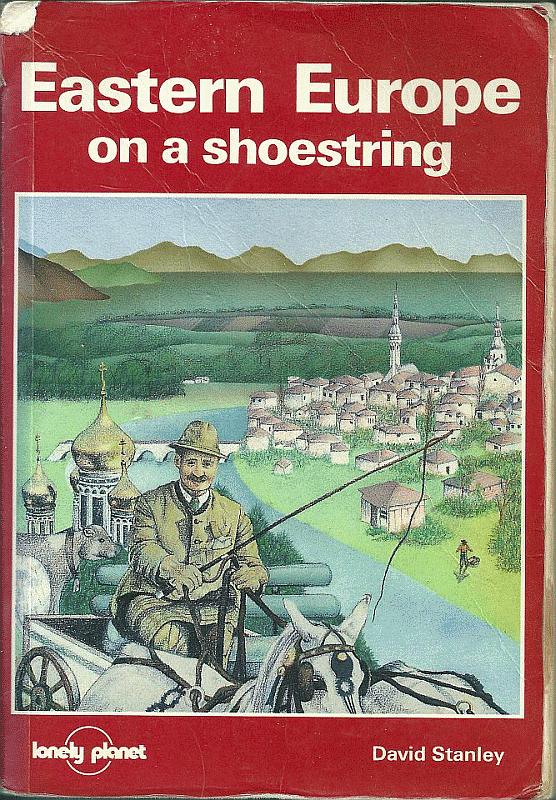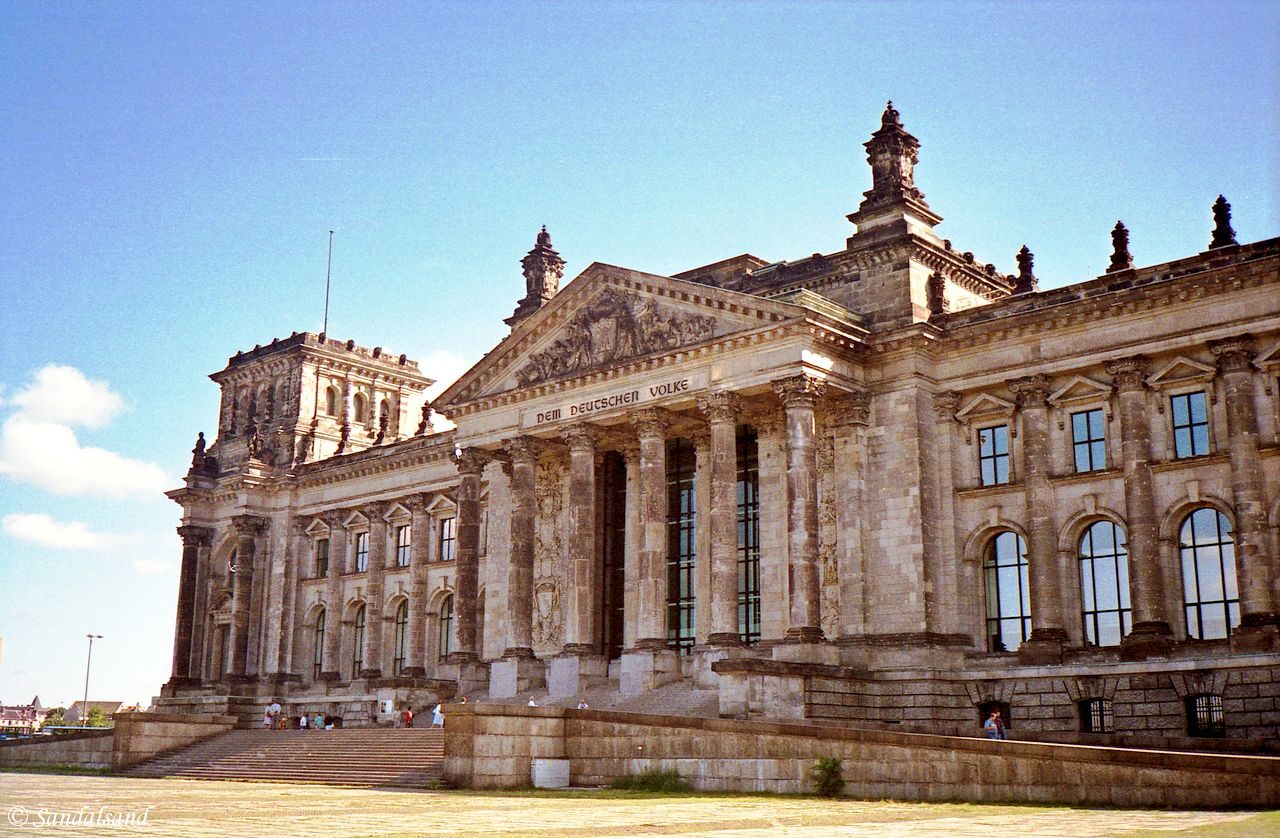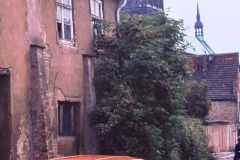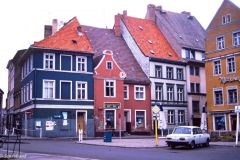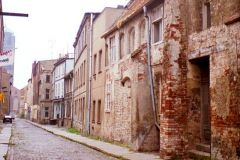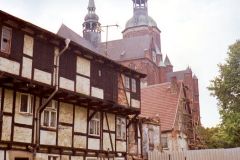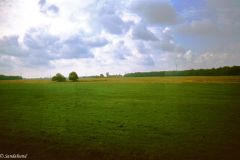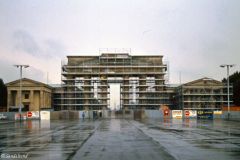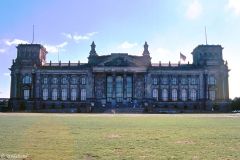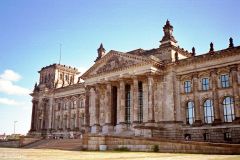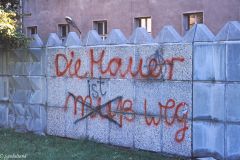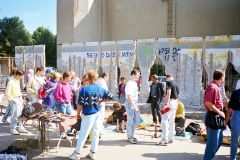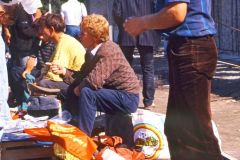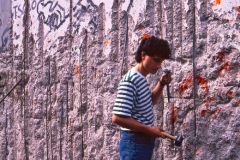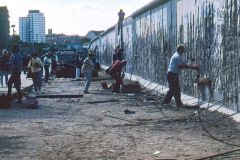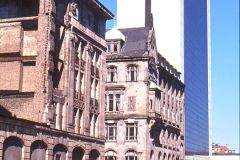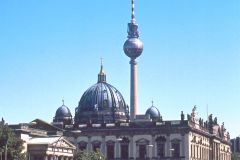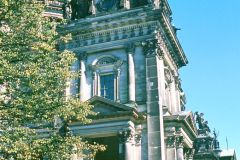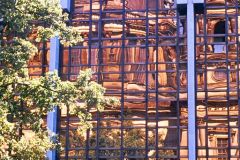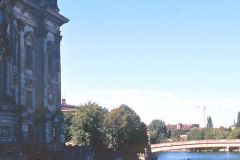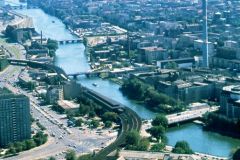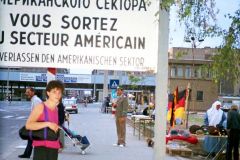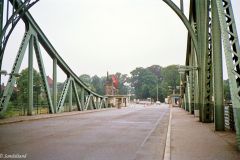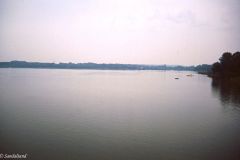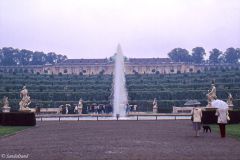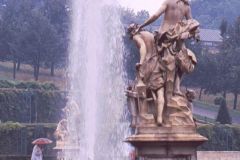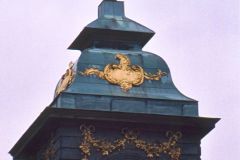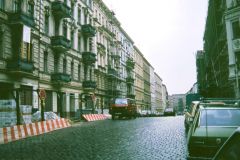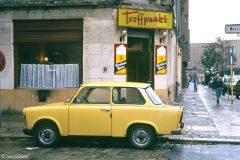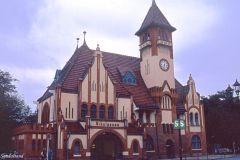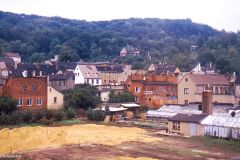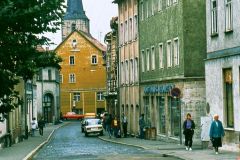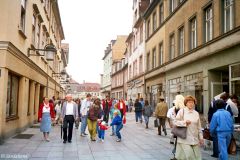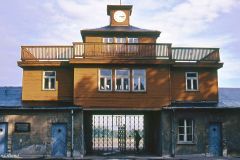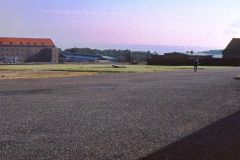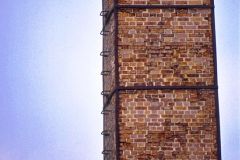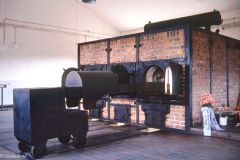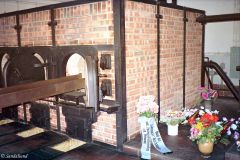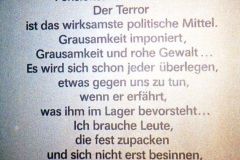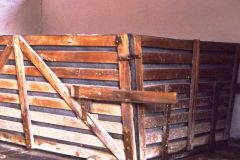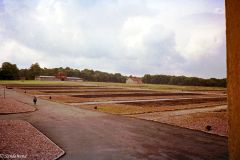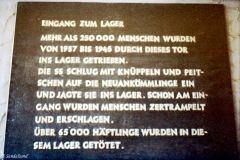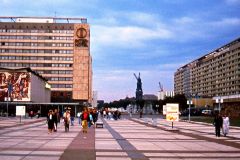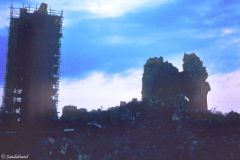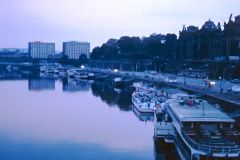This is my diary from a four week train journey to Eastern Europe. We first went to Berlin and the former republic of East Germany.
This is article no. 1 in a series of 6. The 27 days long journey was on an InterRail train ticket a long time ago, in September 1990. We started in Norway and transited through Sweden. We then crossed the Baltic Sea to East Germany (DDR), and continued to West Germany (BRD), Czechoslovakia, Hungary, Austria and Belgium. What follows are transcripts from my travel diary at the time. I have changed or added very little.
Saturday 1.9.1990, Oslo – Sassnitz
Train from Oslo to the south of Sweden
Departure from Oslo, Norway at 1100. The train proved to be a fine mixture of Norwegian, Swedish and Danish carriages. After some searching we finally ended up in an alright cabin in a Danish carriage. There we met a talkative Scouser (from Liverpool). Unfortunately we hadn’t reserved seats so we needed to change cabins twice before we came to Ängelholm, Sweden. From there we took a “bustrain” to Malmö. Malmö seemed to be a nice town, at least judging from the little we were able to see in the centre the hour we had at our disposal before the journey continued.
Our plan was to take the train from Malmö to Trelleborg, ferry from there to Sassnitz in East-Germany (DDR) and train south to Stralsund. We were a bit uncertain how an InterRail-ticket worked on the ferry, and how we would be able to buy an onwards ticket. InterRail is not valid in the DDR. In the Malmö railway station counter we understood it was possible to buy a ticket both in Sassnitz and on the ship. Besides a reservation would not be necessary. Well, we left and after a lot of this and that the train rolled onto the ship.
On a train ferry to DDR
The ship turned out to be very sad indeed. We stayed in our train below deck but I took a trip up to the passenger decks for a look, returning swiftly back down again to our cabin (this time an old East German one). There we got ourselves a couple of hour’s restless sleep, before the ferry after 3.5 hours arrived in the DDR. By that it had by a few hours become a new day.
We had entered DDR at a time it was still a separate state, but less than 10 months after the fall of theBerlin Wall it was gradually being integrated into a unified Germany.
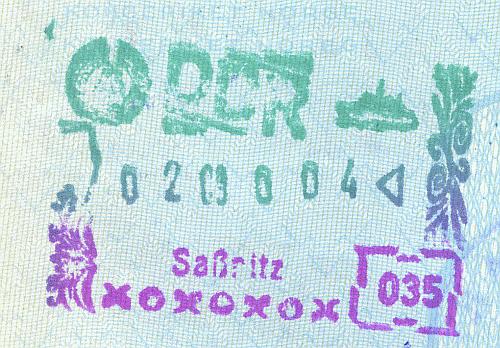
Entry stamp from the Deutsche Demokratische Republik (DDR) in my passport
Sunday 2.9.1990, Stralsund – Berlin
A long day, rich of experiences.
Sassnitz
As mentioned we arrived in Sassnitz harbour in the middle of the night and the train rolled off the ferry. Before we could get much further there was a passport control. It went very fast, just a stamp in the passport and that’s that. Afterwards the conductor came and we were able to pay for the onward journey, about 7 Deutsche Mark (DM) was all (25-30 Norwegian kroner, NOK). The station in Malmö sold the same ticket for about 100 NOK. (At the time of travel a USD was worth 1.6 DM and 6 NOK).
Stralsund
After a couple of hours we arrived in Stralsund. This railway station was on the other side of the city from the mail railway station so we went off on foot in the dark. Upon entering the main railway station we put our backpacks in a locker. Along the way we had seen some of the city and it made want more. Stralsund has indeed not enormously much to offer so we decided to take a train onwards to Berlin around 1100.
We sat down outside the station waiting for the day to start. When it did, we walked around town a bit, had a bite on the station and waited.
Our first encounter with an East-German city was as expected I guess. Stralsund is an old Hanseatic city and was proud of that history. Everywhere there were also signs pointing the way to the town’s second pride, the Meeresmuseum, an aquarium. We did not have the opportunity to go there, and were not tempted for that matter.
Instead we walked the streets. The town is very pleasant with lots of old buildings, cobbled stoned streets, but very rundown. The authorities had set about restoration works, but judging from the need it seemed like an enormous job. Stralsund gave a taste of what the rest of the DDR would show us. There is no lack of bricks, especially red, neither in the past nor the present. Especially in the past as Stralsund at least mainly consists of old buildings. The main church was for sure of brick as well, and huge. German, gothic style. We later saw the same type further south.
The shops were also, partially, as expected. A narrow range of choices, and a lot of tinned food. The window displays could hardly be made less exciting. There were some decent exceptions however. Especially clothing stores had apparently got some impulses from the West, not least when it came to prices. Otherwise jeans seem to be the big garment around here.
East Berlin
Then we came to Berlin, the legendary city. Before that there was however a train journey through a landscape characterised by flatness, to put it that way. It was shear prairie, even though woods and trees put some flavour to the view, it was what I would call a boring scenery. On the way into Berlin we met “typical” East-European blocks of flats.
From the Berlin-Lichtenberg station we took the tube into West-Berlin. It was indeed no real tube as the so-called Stadtbahn mainly runs above ground. But it meant that we also got to see some of the city. Grey and sad if you ask me. And I do!
According to our guide book (Lonely Planet’s Eastern Europe on a Shoestring) it was possible to use a train ticket as payment also on the S-bahn. Which we did, but we are still uncertain if it really was possible.
We wondered, on the way to Berlin, if it was smarter to check into a hotel in the West, than the East. That too I’m wondering about in retrospect, but eventually we went to West-Berlin, all the way to the south-western part of the city and we had a good look aorund as we went. We saw that the border crossing was not much of a border crossing. Actually we didn’t notice anything at all.
West Berlin
Friedrichsstrasse Bahnhof is right in the middle of the city centre, on the eastern side. Formerly this was a transition point with all kinds of control. Now we only passed straight through. Entering West-Berlin we passed where the Wall once was, and all of a sudden we were there. We could tell from the buildings, cars and streets – much higher standard.
We took the S-bahn directly to Wannsee and the youth hostel in the south-west. It was according to the guide book new and nice. It was too, but it didn’t have room for us. The service in the hostel was impeccable however – they made phone calls to the other hostels to check out their availability. They made a reservation in the north part of West-Berlin. So we had to take the train back into the centre again, and north for 1.5 hours or so until we could jump on a bus for 15 minutes more. The buses in West-Berlin are by the way double-deckers like the London buses.
This was kind of stressing but we were able to see more of the city. Up north there were fine villa neighbourhoods, while the houses near the centre were not so well. In Berlin the east-west division between the city parts in terms of social inequality is “nationalised”, so to speak. Well, the youth hostel Ernst Reuter was by far of the same standard as Wannsee but we were given a room despite a cross receptionist making his best not to make it happen.
After relaxing a bit in each our room my girlfriend and I went out to eat. It was a long trip – the bus went the “wrong” way and it took 1.5 hours instead of 15 minutes to go to the centre of Frohnau. There we had lovely Chinese before returning with ease to the hostel and a long sought for sleep.
Monday 3.9.1990, Berlin
Ernst Reuter cost us 20 DM each including an alright breakfast. Wannsee cost 24 but we made a phone call to them last night and ordered a room, as from today.
A walk around famous places in the West
Before that we went down to Zoo, the new centre of Berlin (West). There we put our bags into a locker and went into town. The Gedächtniskirche right by was an experience. It is largely only in ruins after the bomber raids of WW2, which also is the point: showing the results of war. Unfortunately there is a glass pillar erected next to it. It destroys much of the impression, we felt.
The tourist office close by tipped us of a bus going to the Reichstag, and we took it. The Reichstag, which the Nazis burnt in 1933 used to be a monumental building of the foremost.
Right behind it is the very Brandenburger Tor, now under restoration. This triumphal arc was for 30 years in a no-man’s-land because of the Berlin Wall. Now the wall is being torn down. There still is a lot remaining considering its length. At the Brandenburger Tor there are sellers of graffiti-painted bits of the Wall. Other vendors sell uniform effects (DDR/USSR), while still others rented out hammers and chisels. We rented the tools and hacked chunks off the Wall.
And the East – and back again
Later we walked down Unter den Linden in East Berlin. It is strange to wander like this from the west to the east. The upper part of DDRs main parading street was boring in a way, with new buildings on each side. The linden trees were great however. Further down came all the old monumental buildings in a row – massive and impressive.
We ended up on Alexander Platz, a boring if famous square. Close by is the Funk Turm (TV tower) and we took the lift to the viewpoint at 203 metres at a speed of 6 metres a second. The view was magnificent in the clear weather.
We took the Bahn back to Zoo, picked up our backpacks and went to the hostel. The rooms were very good, but separate. We lay down a bit before going into town and West Berlin’s main street Kurfürstendamm (Ku-damm). Lively. A Berlin “must” is of course the Checkpoint Charlie. We walked over there and had our pictures taken under the sign “You are now leaving the American sector”. Since last year there are no more sectors, no more checkpoints, but there is still a very good museum next to it.
We walked around a bit more, ate and went “home”.
Tuesday 4.9.1990, Berlin – Potsdam
In the morning we went to Potsdam, straight west of Berlin. We took a bus to the Glienicke Bridge over to DDR. This is the bridge where so many spy exchanges took place. Now it was an easy walk straight across.
The town of Potsdam itself was not much to write about. A post-war phenomenon with boring shops, squares etc. The town has however a fantastic park and palaces area – the Sanssouci. The weather was bad, but the area must as the name says be without comparison, containing a number of castles and palaces set in a huge park. We went into one of them – grand. The others palaces were expensive and with long queues.
In the afternoon we went to the so-called Alternative part of the city, Kreuzberg and around. What we saw wasn’t really alternative. What was most interesting was the square the tourist office man had pointed out as a place with well-kept turn of the century apartment buildings. It turned out to be much like the buildings in the neighbourhood we live in; Frogner, Oslo. It was an interesting observation, but not particularly exciting.
Wednesday 5.9.1990, Berlin
This is our last day in this to-be all-German capital. First we visited the Dahlem museum, or rather museums. It is a very large complex containing a lot in world art and culture, too much for a few hours.
We continued on a bus north to the centre and into East Berlin to buy train tickets to Weimar tomorrow. After this we walked the streets around the Berlin-Lichtenberg station. If the East-Germans only had been able to paint their boring grey plastered buildings much improvement would be made. Now it is really bad.
And now the really bad weather started as well. In the rain we got lost, but finally found our way to Brandenburger Tor. We had intended to take a walk along the Wall where walking paths had now been laid. But the weather was so uninspiring that we went home and did our laundry, some reading and relaxed.
Thursday 6.9.1990, Weimar
We rose early and went to East-Berlin. The Bahn is fast, but it really takes its time. The train departed precisely but arrived in Weimar a half hour late, after almost four hours. The German punctuality is not always that pünktlich. The ticket cost us two a bit more than 40 DM, the same as from Stralsund. The price is apparently being set on a basis of distance. Reservation cost only 1 DM, but does not seem necessary.
The station is a bit outside the town, but we took the Apostle’s horses and pressed forward. Unfortunately the first youth hostel we came to was closed for restoration, the next was full. On the third there was space but at the same price as in Wannsee (!). Luckily we were given a shared room.
The centre of town is nicer than we expected from reading the guidebook. We walked around in the afternoon hours. We bought a bottle of Yugoslavian quality wine and took it to our room. Lousy wine! I almost had it on my own. Later we went to a café before going to bed in clean, good sheets.
Friday 7.9.1990, Weimar, Dresden
Weimar
A very long day.
Weimar is from history known as the main site of the German democratic experiment between the world wars, and between the emperor and the dictator. The city had however a more glorious past closely tied to the development of the German enlightenment and the Weimar classicist writers Schiller and Goethe. All that was not really the main reasons for coming here.
Buchenwald
Buchenwald, the former concentration camp, is right outside the town. We went there, and had a strong experience. 65 thousand died here before and during the war. The prisoners’ barracks are long gone but the remainder of the area is left as a lasting memory of what systematic madness can lead to.
On the train
Our journey continued, with train at a “normal” price, to Dresden right across southern DDR. The way to Prague lay open to us. On the way we passed, like yesterday, a rolling landscape less flat than in the north. Small, pleasant villages we would have liked to see more of.
The towns of Jena, Gera and Chemnitz (formerly Karl Marx Stadt) passed by. And then we arrived in Dresden buying onward tickets to Prague tonight at 0132. The tickets are only valid to the border as our InterRail-ticket covers the Czech side. (We can only hope that we do not have to pay extra for an express train at the border. We do not have Czechoslovakian currency, but who does outside the country?)
Dresden
Dresden was thoroughly bombed at the end of WW2 and it is therefore mostly new. Broad avenues, pedestrian streets and comparatively OK what we saw a few afternoon and evening hours. But they do have monumental buildings here as well – large too.
The centre was lively before 1900 and nightfall. Then the lights went out, the Imbiss (snack-bars) closed and people disappeared. We had great trouble finding a place to stay in late evening. In the end we found a restaurant and later we sat down in a cold and draughty station building.
Some impressions from the DDR
First impression, not so good
Six days and a few towns is not the correct background to say anything precise about the soon non-existing German Democratic Republic. But nevertheless: The country seems grey and drab.
Grey because all houses are grey-brownish without paint on the plaster. Rundown everywhere. Many city centres had been tremendously better if someone just added some paint to their buildings. Unfortunately there has to be done a quite considerable amount of restoration work in the otherwise pleasant, old town centres of Stralsund and Weimar – the ones we visited. The land was drab because there is so little in the shops. The selection is meagre and the window displays really bad.
Second impression, not so bad
Apart from that it is interesting to travel through the DDR, by all means. The villages we could see from the train windows looked picturesque, the scenery was changing. From the flat lands in the north to the hilly, partially mountainous south, and green trees everywhere.
Transportation works fine. There are trains everywhere, with alright standard. Local buses and in Berlin the underground (unfortunately only with prepaid tickets) are frequent. The cost of transportation is comfortable.
The food is good, sausages are plentiful and diverse. Prices are on the contrary surprisingly high, also for accommodation. The youth hostel in Weimar was as expensive as in West-Berlin which is considered an expensive city.
The unification
DDR is rapidly dissolving into a united Germany, formalising the reunification in October. The Deutsche Mark has replaced the East German currency; mobile banks in the shape of caravans have rolled into the East setting up exchange facilities. Travelling between East and West is hassle-free, and western goods are moving across the former border – but all at a high cost for the comparatively poorer East-Germans. The two parts have a long way to go before real life integration and opportunities catch up with the rapid formal unification process.
Our spending reached 3500 NOK altogether, or almost 300 a day each. That is a lot.
Our journey on a map
This is the map of our journey through parts of Europe, on this InterRail. It includes all published articles, both travelogues and the World heritage sites we visited. There are also markers indicating links to articles with pictures from a particular country (including pictures from other trips).
We travelled by train, however the lines on the map show what a road trip by car would have been. Unfortunately, it is not possible to draw train lines on Google Maps.
Read more
This is an article in a series of six from a journey through East Germany (DDR), West Germany (BRD), Czechoslovakia, Hungary, Austria and Belgium in 1990. The text is a transcript of my travel diary at the time and illustrated with my photographs.
THIS: (1) East Germany: This is my diary from a four week train journey to Eastern Europe. We started in Oslo and crossed the Baltic Sea from Sweden to East Germany, at the time it was still DDR. After this we continued to Czechoslovakia and Hungary before cutting straight west through Austria to Belgium, visiting friends there. The return brought us back home by way of Germany, Denmark and Sweden.
NEXT CHAPTER: (2) Czechoslovakia (1): Unlike East and West Germany, this next chapter is about a country still united, later divided. It tells the story of a country rich in history, and may give some hints of an emerging future. I have split this description in two, this part is about the present-day Czech Republic, the next part about Slovakia.
(3) Czechoslovakia (2): My journey through the now non-existing country of Czechoslovakia here continues with the eastern part of Slovakia.
(4) Hungary: Hungary is a very nice country, with beautiful scenery, good wine and transportation challenges.
(5) Austria: These last parts of this one month InterRail to Eastern Europe involves going west to Austria and Belgium and the long way home to Norway. I have split the story in two. First off is Austria.
(6) Belgium: Famous squares and statues in Brussels and the return to Norway.
We used this guidebook
